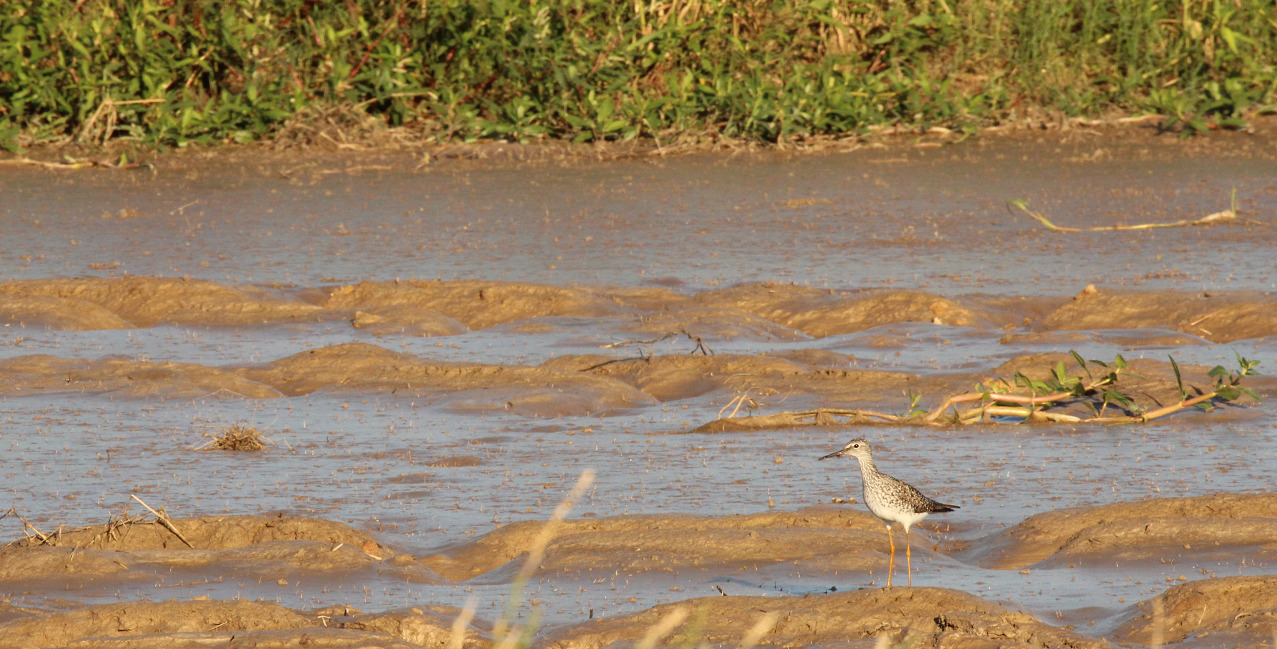
Shorebird Recovery Program Team
From the Arctic tundra to 4,000-meter-high Andean wetlands, from windswept Patagonian grasslands to the saltmarshes of Cape Cod, shorebirds are adapted to many extremes in nature. High altitudes, high temperatures, high salinity, high winds, deep mud, rocky coasts, freezing conditions, shorebirds can handle it all. An example of shorebird tolerance for extremes is the Whimbrel (Numenius phaeopus). One population of these large brownish shorebirds spends September to April living in the tropical realm of mangrove forests in coastal Brazil. But by late May, the same individuals are pulling frozen cranberries from the snowy foothills of the Hudson Bay lowlands of eastern Canada after their northward annual migration.
Even with this ability to adjust to such physical extremes, shorebirds struggle to adapt to human-induced changes to their habitats throughout their migratory journeys. Globally, six shorebird species have gone extinct since the 1500s, with another eight on the brink. Among those on the brink is the Whimbrel’s close relative, the Eskimo Curlew (Numenius borealis), once one of the most abundant shorebirds in the Americas. This incredible and beautiful bird almost certainly no longer exists. Today, shorebirds are undergoing one of the most dramatic declines of any bird group around the world; the recent “three billion birds” analysis of declines in the North American avifauna documents declines of more than one-third of coastal shorebird populations since 1970.
To address these precipitous declines strategically and expediently, Manomet has launched the Coalitions for Shorebird Conservation, with the intent to stabilize and rebuild shorebird populations and their vital habitats, site by site, throughout the Americas. This is no casual feat, and before beginning work on this ambitious goal, we had to recognize several inherent challenges to overcome to make this a successful effort.
The first is that shorebirds are some of the most migratory animals on the planet, and would need concerted management actions from many partners, spread over an enormous geography, all working toward the same outcomes. Also, shorebirds depend on networks of critical migration stopover and wintering sites, whereby changes at any one location can threaten the whole population; so, knowing the most important sites would be critical. The third, and maybe the most daunting challenge, is that coastal, freshwater wetland, and grassland habitats favored by shorebirds are among the fastest disappearing habitats in the world, and innovative ways would be required to preserve remaining pristine areas and restore degraded areas. If habitat loss isn’t enough of a problem to overcome, compared to other bird groups, shorebirds are under-appreciated by the public as “all gray, impossible-to-identify birds,” even among birders and conservation biologists.
Yet, shorebirds are among some of the most awe-inspiring of all bird groups. Few could watch a closely-packed flock of shorebirds in flight as they swirl and ripple in the air while avoiding a falcon and not be impressed. Topping the list of the awe-inspiring, the longest nonstop flight of any bird is the migration of the Bar-tailed Godwit (Limosa lapponica) from its breeding grounds in Alaska flying no less than 7,000 miles to wintering areas in New Zealand—a nine-day continuous flight without any stops down the length of the Pacific Ocean.





 Back to all
Back to all


